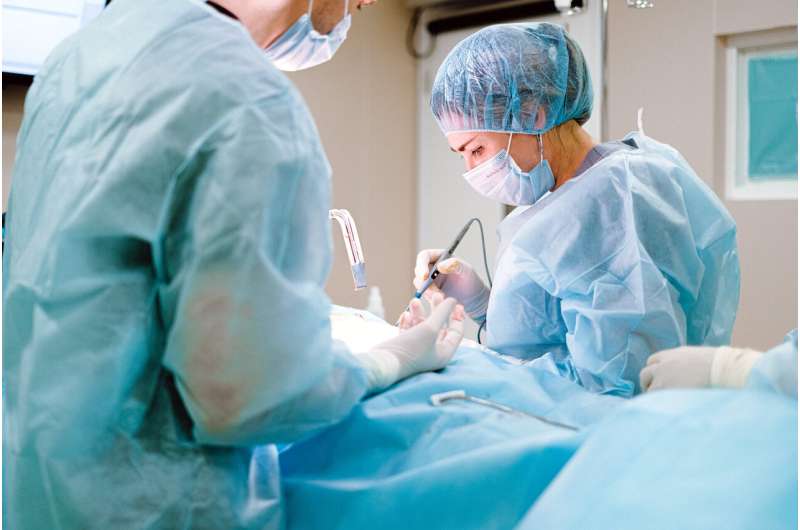This article has been reviewed according to Science X's editorial process and policies. Editors have highlighted the following attributes while ensuring the content's credibility:
fact-checked
proofread
Diagnosis and management of postoperative wound infections in the head and neck region

In everyday clinical practice at a department for oral and maxillofacial surgery, a large number of surgical procedures in the head and neck region take place under both outpatient and inpatient conditions. The basis of every surgical intervention is the patient's consent to the respective procedure. Particular attention is drawn to the general and operation-specific risks.
Particularly in the case of soft tissue procedures in the facial region, bleeding, secondary bleeding, scarring and infection of the surgical area are among the most common complications/risks, depending on the respective procedure.
In their new perspective, researchers Filip Barbarewicz, Kai-Olaf Henkel and Florian Dudde from Army Hospital Hamburg in Germany discuss the diagnosis and management of postoperative infections in the head and neck region.
The research perspective was published in Oncoscience on October 4, 2023, titled, "Diagnosis and management of postoperative wound infections in the head and neck region."
"In order to minimize the wound infections/surgical site infections, aseptic operating conditions with maximum sterility are required," write the authors.
Furthermore, depending on the extent of the surgical procedure and the patient's previous illnesses, peri- and/or postoperative antibiotics should be considered in order to avoid postoperative surgical site infection.
Abscesses, cellulitis, phlegmone and (depending on the location of the procedure) empyema are among the most common postoperative infections in the respective surgical area. The main pathogens of these infections are staphylococci, although mixed (germ) patterns are also possible.
"Risk factors for the development of a postoperative surgical site infection include, in particular, increased age, smoking, multiple comorbidities and/or systemic diseases (e.g., diabetes mellitus type II) as well as congenital and/ or acquired immune deficiency," the researchers say.
More information: Filip Barbarewicz et al, Diagnosis and management of postoperative wound infections in the head and neck region, Oncoscience (2023). DOI: 10.18632/oncoscience.589





















